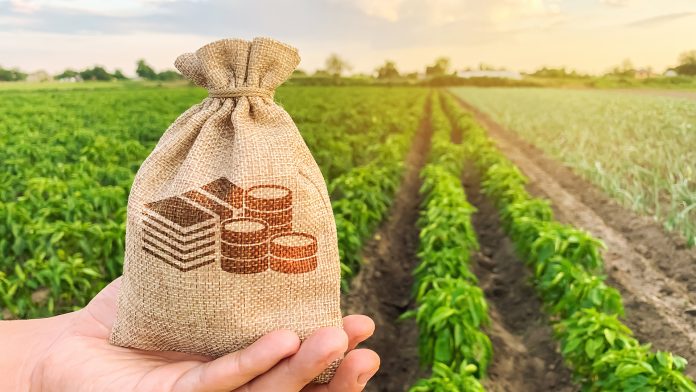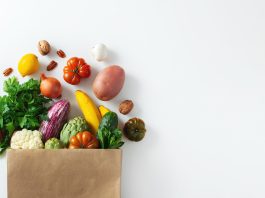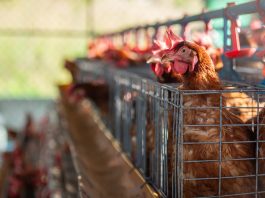Making agricultural trade policies more sustainable calls for an integrated, systemic, multi-method approach covering multiple dimensions of sustainability.
Having played a key role in providing food security and diversifying diets, global agricultural trade has also generated negative impacts on environmental sustainability, social well-being, and economic viability in global agri-food value chains.
The EU Horizon2020 project Making Agricultural Trade Sustainable (MATS) identifies some of these impacts and showcases an innovative approach to identify leverage points for sustainable transformation.
The MATS project responds to the need for agricultural trade policy analysis that manages complex interrelations between natural, social, and economic systems from local to global level.
In so doing, the project outputs include an integrated multi-method approach for policy analysis, including 15 case studies, leading to a set of policy recommendations and transition pathways towards more sustainable agricultural trade policies.
Focusing on governance, design, and implementation improvements at EU, African, and global levels, this approach transcends sustainable agricultural trade and is applicable to other sectors and contexts.
Furthermore, integrating environmental and social externalities into economic analysis, this approach holds transformative potential for policy evaluation and impact assessments in the fields of agricultural trade and sustainable development.
Finally, MATS analysis identifies and strengthens the links between trade policies and sustainable investments to unlock the transformative potential in global agri-food value chains. Building upon these links, MATS hopes to contribute to drafting future policies that foster the positive and mitigate the negative impacts of trade on sustainable development.
The MATS project runs until the end of 2024. Here, we present the key project features and discuss the lessons learned so far towards enhanced tools for policy evaluation and for making agricultural trade more sustainable.
For further information about the MATS project, visit https://sustainable-agri-trade.eu/
Local level evidence through 15 case studies
A core part of the MATS integrated multi-methods approach was to conduct 15 in-depth country, regional, and product (commodity) specific case studies. The aim was to provide local-level evidence and shed light on the intricate linkages between key elements in the food system, mainly focusing on African countries, but also covering Europe and Latin-America.
The MATS Agricultural Trade Systems Conceptual Framework (Fig. 2) illustrates these linkages and identifies how elements across political, human, social, environmental, and economic dimensions interrelate with agricultural trade regimes and policies.
Understanding this complex structure is pivotal for identifying leverage points to effectively address the key positive and negative impacts of trade on environmental sustainability and human well-being.
For example, a case study that examined linkages between Tunisian olive oil exports and water use showed that export trend has a high hidden economic, social, and environmental cost. Export and import oriented firms accumulate economic gains while traditional farmers and local consumers lose.
Furthermore, government policies favouring export-oriented large olive oil plantations have led to monoculture (that accounts for 80% of olive oil plantations), over-irrigation, and deterioration of soil, to mention a few drawbacks.
Another case study that concentrated on the alleviation of poverty among smallholder coffee farmers in Tanzania, found that unstable government policies on agriculture and co-operatives has decreased the effectiveness of the coffee value chain and the institutions governing the sector.

Small-scale farmers are the least privileged in the value chain, not competitive enough, have poor access to financial instruments, and are often excluded from the decision making. To uplift smallholder farmers, agricultural marketing co-operatives should be strengthened through capacity building in governance and market intelligence, their participation in the decision making should be fostered, and access to financial instruments guaranteed.
The importance of identifying leverage points
The joint analysis of the 15 case studies unveils key leverage points in three dimensions: Policy and regulatory frameworks, economy and markets, and social capital.
Regarding policy and regulatory frameworks, the findings suggest that participatory governance should be fostered by facilitating more collaborative and community-based work along the value chain, creating spaces for diverse stakeholders to engage in understanding issues (such as externalities or market power asymmetries), and collectively identifying potential solutions to inform policies and influence decision-making.
Additionally, policymakers should establish robust facilitation and resolution mechanisms between public and private institutions involved in global agri-food value chains for greater policy coherence and more effective implementation of policy interventions. To further improve policy coherence, it would be essential to ensure regulatory consistency across different sectors, aligning them with evolving political and socioeconomic context, and recognising the specificities of local context.
Transparency and accountability are foundational leverage points for enforcing regulations and promoting the adoption of voluntary sustainability standards and certifications. Without a clear understanding and support from local and global stakeholders, policies and projects may fail to contribute to establishing a system rooted in fair trade, socioeconomic justice, and ecological resilience.
The case studies underscore the delicate balance between prioritising competitiveness to meet the demands of global markets, and the need for strengthening resilience of domestic agrifood systems in terms of working towards food self-sufficiency through enhanced local markets. This balance is particularly vital in regions where a significant portion of the population faces food security challenges.
Within the dimension of economy and markets, access to finance for small- and medium-scale farmers was identified as essential for adopting sustainable production practices and enhancing competitiveness. Investments in infrastructure and technology were found to be key leverage points for adding value to farming products and reducing transportation and operational costs derived from a strong dependence on imported inputs.

Improving access to technology, especially for smallholder farmers, to enhance pricing transparency was identified as a potentially powerful lever to ensure fairer prices and address power imbalances.
Finally, within social capital, supporting associational membership, local partnerships, and collaborations along the global agri-food value chain were identified as key leverage points for strengthening inclusive decision-making and traditionally marginalised actors such as smallholder farmers.
Addressing the complexity of the global agri-food value chains
The second key part of the MATS multi-methods approach consisted of a modelling framework that combined three modelling approaches: A participatory qualitative systems approach (including the creation of system maps, or Causal Loop Diagrams (CLD), customised quantitative systems models (using System Dynamics coupled with spatially explicit models), and a global Computable General Equilibrium (CGE) model. To capture the complexity of global agri-food value chains, system dynamics were introduced into the framework as a method to fully integrate social, economic, and environmental indicators.
At its core, the food system embodies a dynamic web of relationships among various actors and elements such as environmental indicators, socioeconomic factors, and market dynamics. System dynamics provide a holistic framework to analyse how changes in one of these elements ripple through and affect others, thereby supporting the integration of detailed knowledge across each of the dimensions mentioned above.
The modelling framework was applied to seven of the 15 case studies. The impact of unsustainable production and case-study specific trade policies, as well as multidimensional gains emerging from improved sustainability were identified and quantified individually for each case study.
For example, Fig. 2 presents a Causal Loop Diagram (CLD) showing trade-related interrelations for a case study concentrating on the soy-meat complex in the Cerrado region in Brazil. It shows there are two key leverage points for improving social and environmental sustainability, first by supporting traditional communities and second by endorsing soy production that upholds social and environmental production standards.
The case study found that politically viable options to actualise these leverage points would be for example multi-actor territorial agreements and eradication of illegal deforestation through trade-related standards proposed by Chinese partners.
Another case study assessed social, economic, and environmental outcomes of milk production to illustrate the level playing field for trade across various countries. Several intervention options were identified to improve simultaneously the three sustainability dimensions. In terms of economic outcomes, the impact of farm size, milk productivity, and labour costs on the profitability of farm operations was considered. The environmental constraints covered, for example, manure management and GHG emissions.
The study found several solutions to achieve multi-dimensional sustainability and improved trade dynamics. For example, efforts to improve labour conditions turned out to level the playing field across regions on the social dimension, while reforestation, land restoration and the introduction of renewable energy for farm operations would help to reduce GHG emissions. To increase dairy farm revenues, offset higher labour costs, and decrease land use and expansion requirements, improved milk productivity turned out an important factor.
The power of economic valuation of externalities
The MATS modelling assessment confirmed that seamless integration of economic valuation into policy analysis that assigns a value to externalities, becomes a powerful tool for creating domestic incentives that encourage the adoption of sustainable practices with global impacts.
Economic incentives serve to motivate farmers and other value-chain businesses to transition towards sustainable practices, aligning environmental and social considerations with economic interests.
Similarly, the impacts of trade policies on domestic production should be assessed using such economic valuation of externalities, since the power of economic valuation of social and environmental impacts lies in its ability to uncover the hidden costs associated with unsustainable agriculture practices. Hence, it would be of high importance to integrate economic evaluation of environmental and social externalities in sustainability impact assessments of trade policies.
Regulatory frameworks need to connect local and global levels
To connect local level to global level, MATS addressed the interplay of domestic and international legal and regulatory frameworks and their connections to the above leverage points, focusing on labour and environmental standards, pricing mechanisms, and intellectual property.
Global agri-food value chain actors understand the need for transparency throughout the chain in a heterogenous manner, despite their awareness of binding formal rules.
Therefore, institutional frameworks that enable change throughout the value chain ought to promote both formal and informal collaboration and coherence in trade policies. Principles like risk-based regulations and revising outdated laws to streamline value chain processes were identified as part of valuable revisions of legal frameworks for supporting environmental and social sustainability.
Transition pathways towards more sustainable trade
The MATS project culminates in the creation of transition pathways towards more sustainable agricultural trade regimes based on the evidence gained from the 15 case studies and the modelling assessment.
At the heart of this process, a MATS vision for sustainable agricultural trade was created to arrive at a common understanding of the aims, timelines and activities needed for making agricultural trade more sustainable. A participatory visioning process helped to identify desirable future directions that was followed by the identification of concrete actions, leading to the accomplishment of different vision statements for the time horizon extending beyond 2035.
The formulation of transition pathways is still ongoing. However, the process so far reveals that both existing and new policies are needed for addressing all three dimensions of sustainability. Decentralisation of decision-making and reduced bureaucracy were identified as critical leverage points for guaranteeing smallholder farmers’ access to markets and fair prices.
Evaluating the impacts of agricultural trade policies
Up to date, the MATS project has revealed the importance of integrated evidence-based analysis. It extends beyond economic indicators, enabling the evaluation of the impacts of agricultural trade policies across a range of social, economic, and environmental sustainability indicators.
Furthermore, it confirms that the heterogeneity of location-context-product specific cases must be addressed when evaluating sustainability impacts of trade policy interventions, or the lack thereof.
The integrated multi-methods approach can help to identify the most effective interventions in global agri-food value chains to promote environmental and social stewardship while maintaining productivity and resilience.
Furthermore, researchers and policymakers can simulate different scenarios to anticipate potential outcomes and devise strategies to mitigate risks and harness opportunities, ensuring a more sustainable and resilient food system.
This article has presented an overview of the project’s work, yet research is still ongoing. The project is currently wrapping up the findings that will be processed into transition pathways, policy recommendations, scientific articles, and much more. As the MATS project will run until the end of the 2024, more outputs can be expected towards the end of the year. The project will organise a Sustainable Trade Policy Forum in Brussels (19-20 November, 2024) to showcase the final project outputs.
Please note, this article will also appear in the 18th edition of our quarterly publication.





